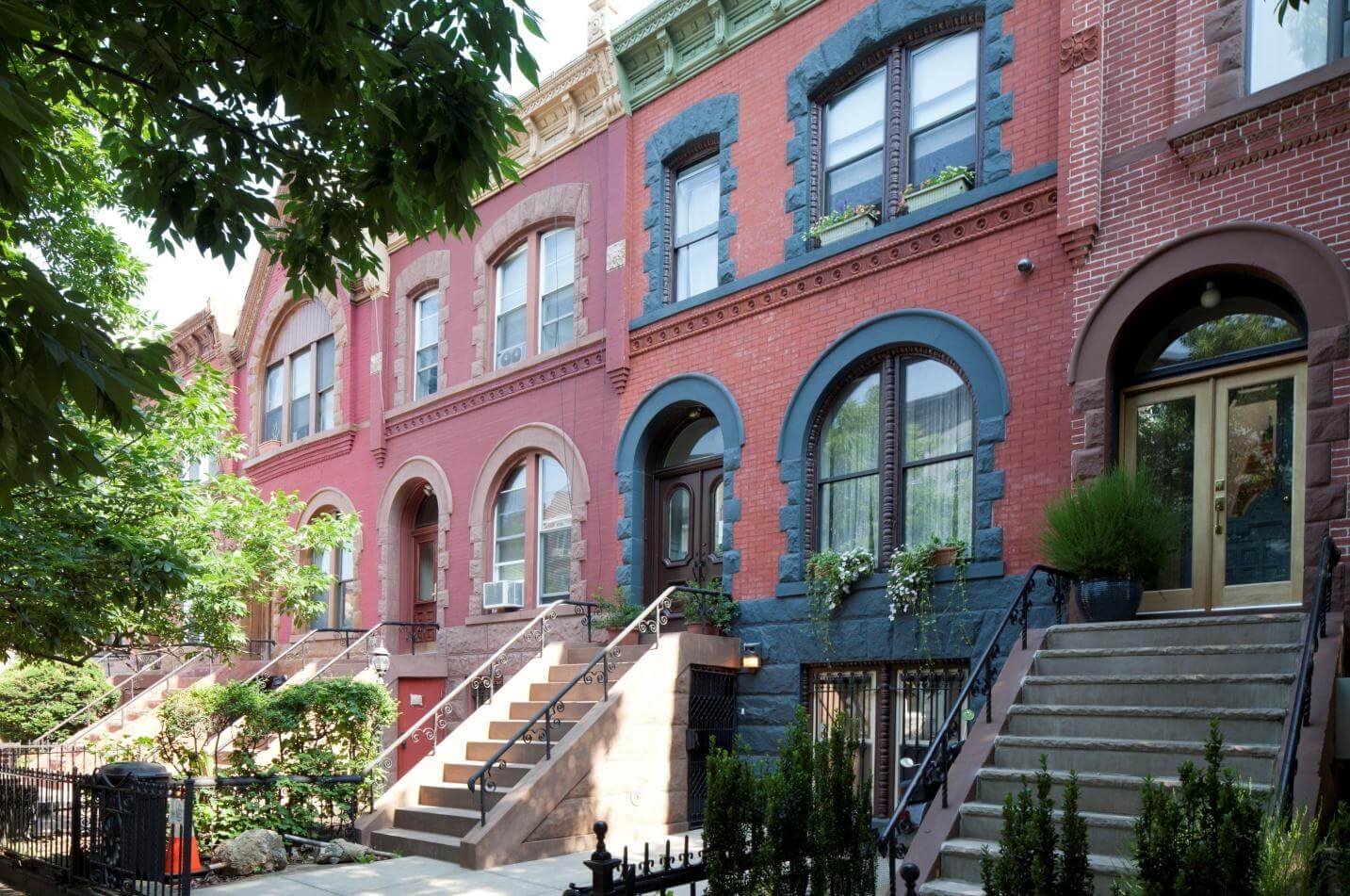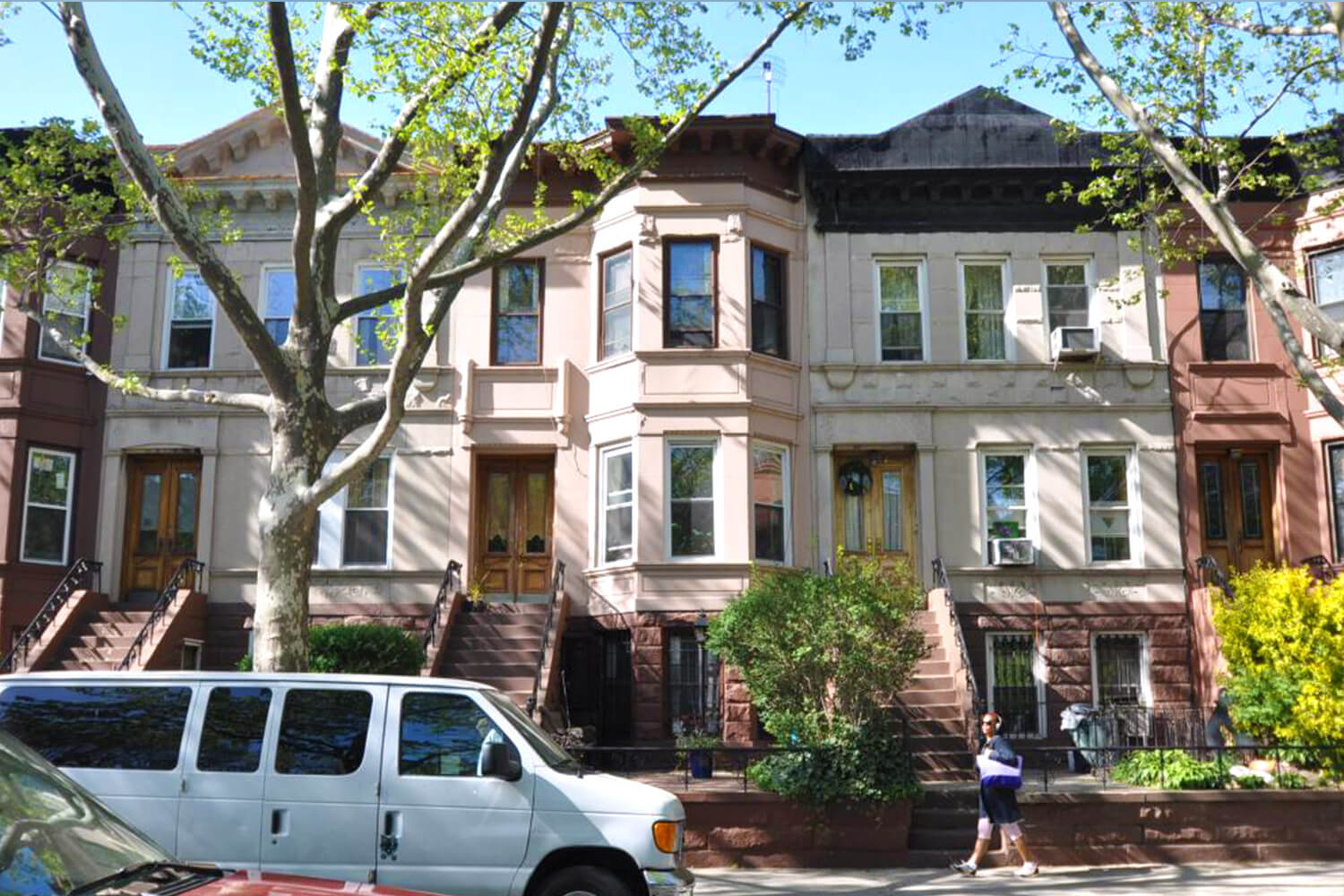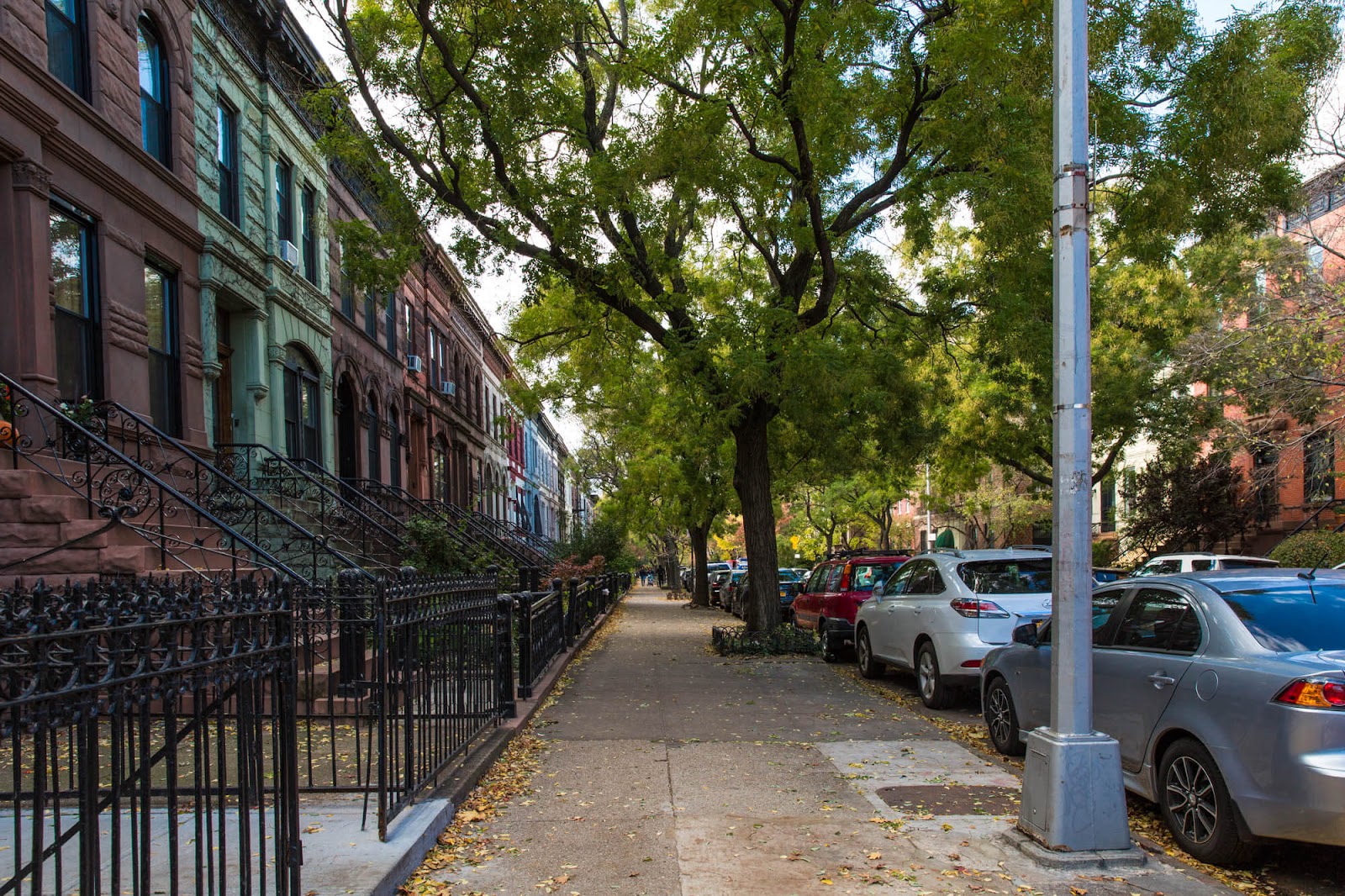In the late 18th and early 19th centuries, when New York’s row houses were erected in the Federal and Greek Revival styles with red brick facades, brownstone was frequently utilized for slopes, door finishes, window lintels and window sills in small dwellings. It became popular since it was less expensive than standard and favored limestone or white marble. Read more about the architecture of Brooklyn residences in the nineteenth century at brooklyn-future.
Popularity of Romantic Classicism

By the end of the 1840s, brownstone had emerged as the most popular choice for row house facades. Firstly, the brownstone represented the popularity of mid-nineteenth-century Romantic Classicism, which praised beautiful landscapes (for example, the Hudson River School’s romanticized nature). The deep shades of gray, green and brown found in the idealized landscape were reflected in the brownstone.
Secondly, given that the brownstone could be spread in large sheets with nearly invisible seams, the exterior of the row house and the streetscape became more monumental, which was much desired. Brick facade homes could not create the same visual effect due to the stark white mortar lines separating each brick.
Furthermore, compared to brick or wood, stone was regarded as a more suitable building material. As a matter of fact, row houses from the middle of the nineteenth century were called brownstone fronts because their street facades were encased in brownstone veneers, which were around 4-6 inches thick.
The Industrial Revolution was extremely influential in this regard. The development of steam technology enabled craftsmen to cut brownstone faster and cheaper than ever before, making it affordable for middle-class residences rather than pricey townhouses.
Everything made of brownstone

From the 1840s to the 1890s, brownstone facades were so popular for residential buildings in Brooklyn that the term “brownstone” is still used today to describe any row house in the city. This includes even Federal houses from the early nineteenth century with red brick facades or houses built in the 1890s with white limestone facades.
Despite its popularity in the nineteenth century, brownstone had certain drawbacks. For example, the north side of the City Hall was originally built of brownstone. The fathers of the city saved money by using less expensive sandstone for the north side instead of marble like for the other sides since they didn’t think New York would expand past City Hall. However, already in the 1850s, one publication complained about that “decay is visible in almost every part, and many of the stones are miserably peeled and mutilated.”
Brownstone issues

Even the finest townhouses had brownstone chipping and crumbling. Many New Yorkers in the nineteenth century attributed brownstone’s issues to improper quarry processing or hasty building processes. Brownstone crumbles and flakes when cut and laid because water penetrates into the open pores of thick brownstone blocks and, when frozen, expands and splits it into big, thin sheets. If the stone had been cut and laid across, most brownstone facades would have deteriorated much less, both then and now.
Fortunately, the brownstone proved more durable than its doubters had claimed. However, like any building material, it must be maintained and repaired before deterioration occurs. Frame houses should be painted on a regular basis. Houses with brick facades must be regularly repointed. Brownstone, like any other building material, requires regular upkeep and attention.